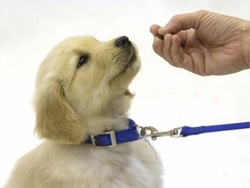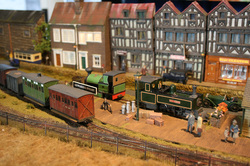
If you are one of those people who find training their dog fun, you have come to the right page. The lessons one will teach can be practiced anywhere – in your living room, in the halls, and outdoors.
In teaching tricks to your pet, it is important to remember that tricks should be performed in short sessions. This is done so the pet could have ample of time to rest. You should also keep the training fun for you and your pet. The moment you spent with your will contribute to your healthy bond.
Reading the Body Language
Dog obedience training is all about communication. To become a better dog trainer, you should also be able to read the dog’s mood. Your pet could be tired, stressed, or scared. Signs like these often require you to cease the training. Or else your dog will be vulnerable to diseases or present signs of aggression.
Reading the body language involves observing every aspect of your dog. You monitor the pet’s facial expression, noises it makes, and body postures. The dog will utilize its tail, mouth, and eyes to express what it feels. By learning these, you will know what the pet is feelings so you can address its wishes.
The dog’s eye when half closed indicates signs of submission or pleasure. Eyes wide open indicate aggression. Never try to outstare your dog when this happens. The tail is a lot harder to read but generally a wagging tail often expresses pleasure and friendliness. There is no exact way a dog holds its tail. This behavior varies from breed to breed. However, when the dog waves its tail stiffly and slowly, it shows an angry expression.
Dogs often want to play. It expresses this either by raising a paw, by barking, or by bowing down. It might also offer a toy or jump over other dogs to instigate a chase.
In general, if your dog is feeling aggressive, it will make itself look larger by standing up with its tails and ears sticking upright. A submissive dog often does the opposite. It makes itself look small and behave like a puppy.
In addition, this instructional video will show to you proven dog obedience training that will benefit you and your pet.
Teaching Correct Behavior
Pet dogs learn by association. The trick is to reward or praise the dog every time it does something nice. With this method, the dog will more likely repeat the action. Reward it with dog treats or praise it excessively.
With the basic concept in dog obedience, you may now begin teaching your pet what it can and cannot do. Dangerous behaviors should be discouraged by telling your pet “No!” This is enough to get the dogs attention. Acts of violence and frequent shouting will not help your dog learn.
It is also important for your dog to know when to bark. The trick here is to teach the dog when to stop.However, commanding “Stop barking” should be not be used as an act of reprimanding.
In teaching tricks to your pet, it is important to remember that tricks should be performed in short sessions. This is done so the pet could have ample of time to rest. You should also keep the training fun for you and your pet. The moment you spent with your will contribute to your healthy bond.
Reading the Body Language
Dog obedience training is all about communication. To become a better dog trainer, you should also be able to read the dog’s mood. Your pet could be tired, stressed, or scared. Signs like these often require you to cease the training. Or else your dog will be vulnerable to diseases or present signs of aggression.
Reading the body language involves observing every aspect of your dog. You monitor the pet’s facial expression, noises it makes, and body postures. The dog will utilize its tail, mouth, and eyes to express what it feels. By learning these, you will know what the pet is feelings so you can address its wishes.
The dog’s eye when half closed indicates signs of submission or pleasure. Eyes wide open indicate aggression. Never try to outstare your dog when this happens. The tail is a lot harder to read but generally a wagging tail often expresses pleasure and friendliness. There is no exact way a dog holds its tail. This behavior varies from breed to breed. However, when the dog waves its tail stiffly and slowly, it shows an angry expression.
Dogs often want to play. It expresses this either by raising a paw, by barking, or by bowing down. It might also offer a toy or jump over other dogs to instigate a chase.
In general, if your dog is feeling aggressive, it will make itself look larger by standing up with its tails and ears sticking upright. A submissive dog often does the opposite. It makes itself look small and behave like a puppy.
In addition, this instructional video will show to you proven dog obedience training that will benefit you and your pet.
Teaching Correct Behavior
Pet dogs learn by association. The trick is to reward or praise the dog every time it does something nice. With this method, the dog will more likely repeat the action. Reward it with dog treats or praise it excessively.
With the basic concept in dog obedience, you may now begin teaching your pet what it can and cannot do. Dangerous behaviors should be discouraged by telling your pet “No!” This is enough to get the dogs attention. Acts of violence and frequent shouting will not help your dog learn.
It is also important for your dog to know when to bark. The trick here is to teach the dog when to stop.However, commanding “Stop barking” should be not be used as an act of reprimanding.

 RSS Feed
RSS Feed